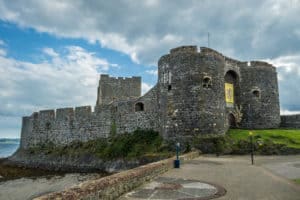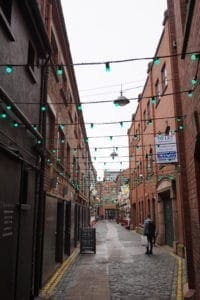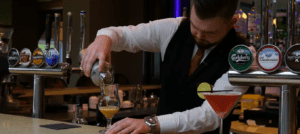Birth & Marriage Traditions: Irish Cultural Practices Through Life’s Milestones
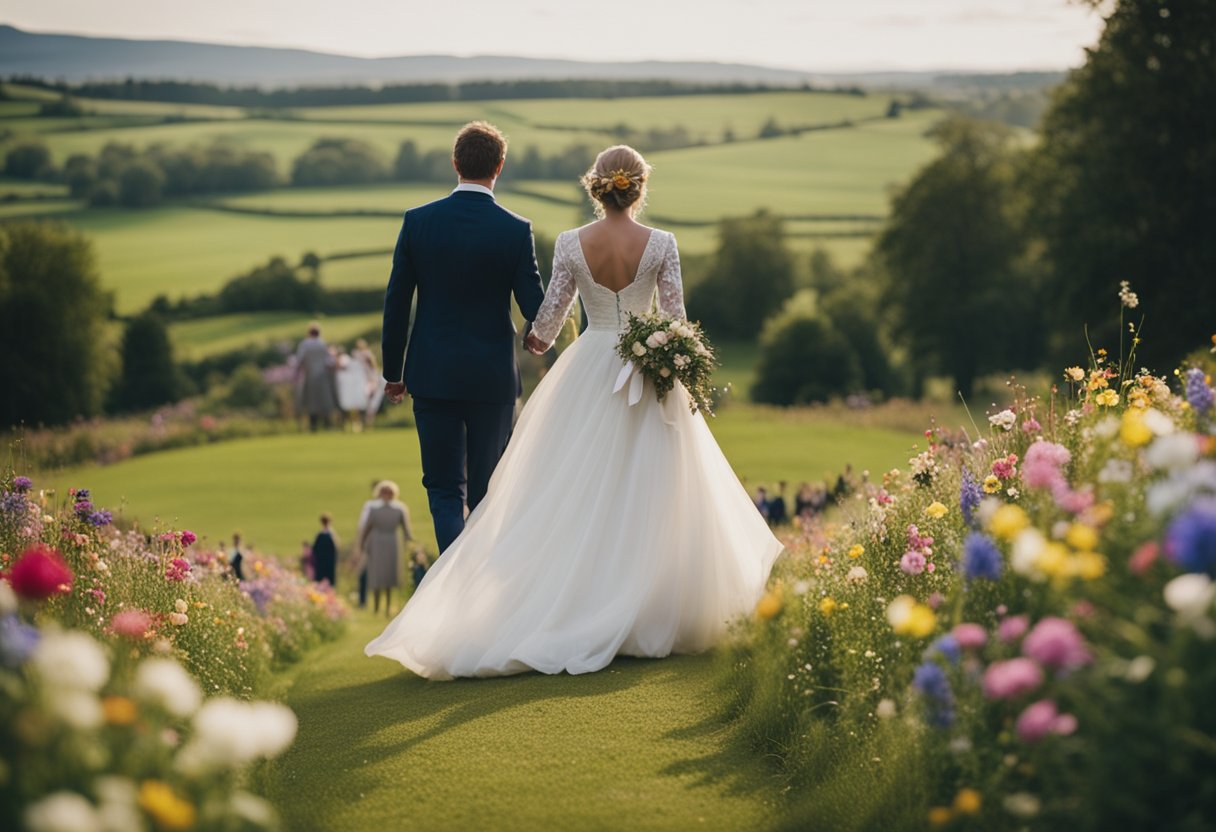
Updated On: April 22, 2024 by Maha Yassin
In Ireland, the tapestry of life is woven with traditions and customs that mark the milestones of the human experience. From the very first breath to the final farewell, Irish society celebrates each passage through age-old rituals steeped in both ancient roots and the pervasive influence of Christianity. The cycle begins with birth and naming ceremonies that blend familial joy with cultural significance, often infused with a touch of the supernatural. Amidst the emerald landscapes, every christening and first step is an opportunity to honour the child and the community they are welcomed into.
Marriage traditions in Ireland have a charm that is both timeless and indicative of a culture that values the binding of two lives in matrimony. It’s a vivid illustration of life in rural Ireland, where the union is a personal joy and a communal event, enchanting brides and grooms with blessings and customs that date back centuries. Equally poignant are the death and mourning customs that provide solace and continuity, ensuring that those who pass on are remembered with respect and dignity. These enduring customs resist time erosion, remaining keystones of an Irish society that deeply values its heritage.
Ancient Roots and Christianity’s Influence
In tracing the life cycle in Irish tradition, we observe a rich tapestry where pagan roots intertwine with the spread of Christianity. This confluence has shaped Ireland’s unique cultural ceremonies and beliefs.
Pagan Festivals and Christian Celebrations
Imbolc, once a pagan festival signifying the beginning of spring, became closely associated with St. Brigid, a figure venerated in both early Irish Christianity and pagan folklore. Her feast day on 1 February symbolises the transformation of a season and a culture. Similarly, Easter, a cornerstone of Christian belief celebrating Christ’s resurrection, converges with ancient festivities of renewal and rebirth.
Lughnasa, originally a festival honouring the god Lugh, known for his skills and crafts, evolved into a time for community gatherings and fairs, merging seamlessly into our Christian calendar. While Samhain, marking the end of the harvest season, laid the groundwork for All Hallows’ Eve, it demonstrates the syncretism of beliefs, blending pre-Christian and Christian traditions.
Syncretism of Beliefs
Our traditions exemplify a Syncretism of Beliefs—a coalescing of the old and the new. The stories of Manannán mac Lir, the sea deity in Irish mythology, continue to colour folklore while embracing Christian contexts. Our traditional narratives have been adept at absorbing new influences, as seen in how Christianity adapted to local customs, creating a unique Irish flavour of the faith.
As we respect and celebrate the life cycle in Irish tradition, we hold dear these ancient connections, giving value to our heritage while acknowledging the flowing stream of cultural evolution.
Birth and Naming Ceremonies
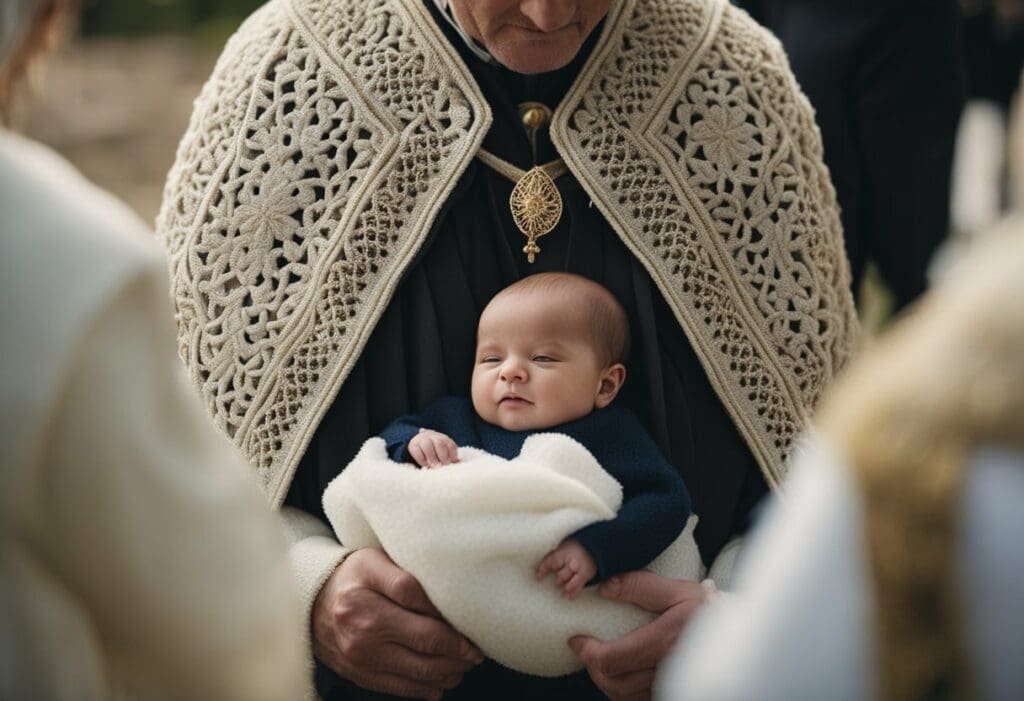
In Ireland, the arrival of a newborn is celebrated with time-honoured customs that blend cultural and religious significance. These traditions offer a profound way to welcome a child into the community and fortify them with spiritual protection.
Rituals of Welcoming
Welcoming rituals for birth in Ireland often involve the entire community. Traditionally, families would celebrate the birth, and neighbours would call by to offer their well-wishes and gifts. The newborn would be shown to visitors, symbolising the integration of the new life into the fabric of community life. These customs provided a warm welcome to the child and reinforced social bonds.
Baptism and Religious Rites
Baptism in Ireland, predominantly a Catholic country, is considered a sacrament of initiation and serves as the child’s formal introduction to the Christian community. The ceremony typically involves a priest using holy water to cleanse original sin. It may incorporate the ancient rite of adding salt to the baby’s mouth, symbolising wisdom and protection from evil. The church plays a pivotal role in this rite, often providing the setting for this significant milestone in a person’s life cycle.
Marriage Traditions
In Irish tradition, marriage is a pivotal moment that marks the union of two families. It’s steeped in customs extending from the engagement to the wedding day, each with symbolism and significance.
Engagement and Wedding Customs
We observe numerous rituals during the engagement and wedding phases. It’s customary for couples to exchange rings as a symbol of their commitment. Traditionally, the Claddagh ring, featuring two hands clasping a heart topped with a crown, represents love, loyalty, and friendship. These rings are often passed down through generations.
The wedding ceremony itself is filled with meaningful customs. One element of the ceremony is the practice of handfasting, where the couple’s hands are tied together with a cord or ribbon to symbolize their union. Historically, this ritual was as binding as a marriage certificate is today. Tying the knot is a phrase believed to originate from this ancient custom.
The Role of Dress and Symbols
On her wedding day, the bride’s dress often incorporates Irish elements such as lace or Celtic patterns. Accessories may include a Celtic knot to signify the journey of life or a horseshoe for good luck, worn facing upward so the luck doesn’t run out.
Another lesser-known tradition involves the bride and groom carrying a small amount of salt in their pockets. Salt, like fire, is thought to offer protection and ward off evil spirits. Elements like these infuse the wedding with a deep sense of continuation of heritage, connecting the couple, their ancestors, and their shared culture.
By adhering to these wedding traditions, we embrace our Irish identity, celebrating the present union and the generations that paved the way for these moments.
Life in Rural Ireland
This section explores the profound connection between the land, its practices, and the traditional festivities that mark Rural Ireland’s life cycle.
Agricultural Practices and Celebrations
Rural areas in Ireland have historically been deeply intertwined with agriculture, shaping society’s social and economic fabric. During lambing season, communities in regions like Ulster come together as sheep farming becomes a central focus. Lambing is not just an agricultural event; it signifies renewal and the continuation of tradition. Special attention is given to the care of ewes and their newborn lambs, ensuring the flock’s health and productivity.
Festivities, too, are closely linked with agricultural cycles. Seasons dictate the rhythm of celebrations. For instance, harvest time is marked by festivals honouring the land’s bounty with music, dance, and feasting. These events reinforce the community bonds and allow for a collective gratitude for the land’s sustenance.
The Significance of Land and Animals
In rural Irish tradition, land isn’t merely a resource — it’s a living legacy and community member. The land is respected, sometimes personified, and often celebrated through story and song. It is common for families to pass down their connection to a particular parcel of land over generations, with a deep sense of custodianship.
Animals are equally significantly seen as companions in the rural lifestyle. The hare, for example, is an iconic animal in Irish folklore and is treated with affection and mysticism. The survival and health of animals like sheep are critical for economic reasons and for maintaining cultural practices and identities that have thrived for centuries in rural communities.
By engaging with these traditions, we keep the story of rural Ireland alive and ensure that its practices, from the care of the land and animals to the colourful celebrations, continue to enrich our society.
Death and Mourning Customs
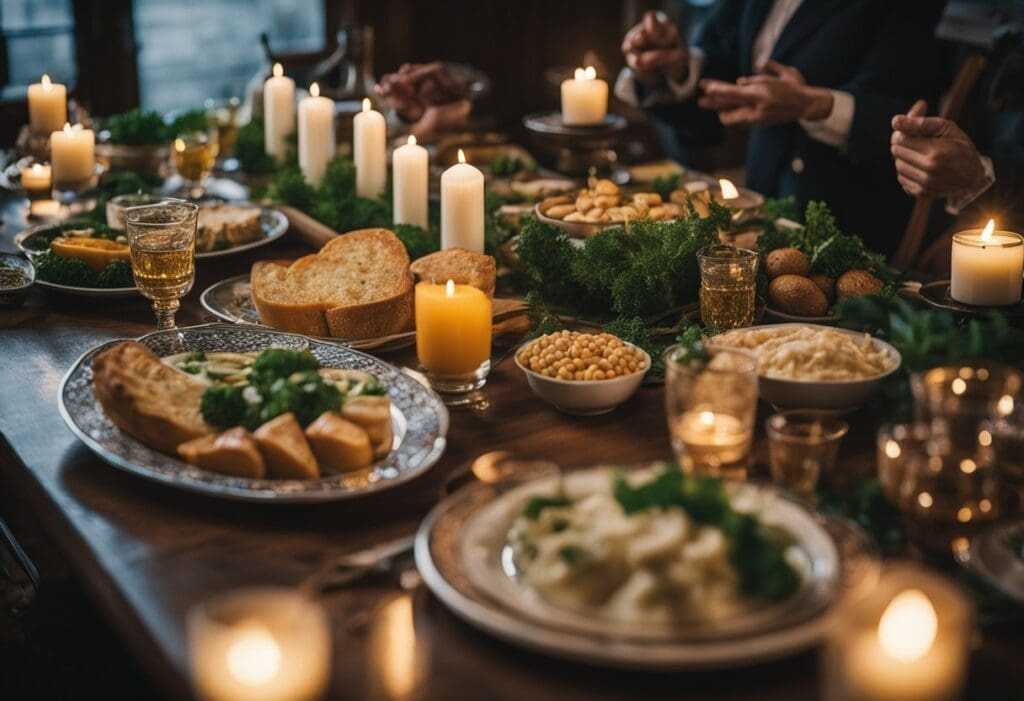
In Irish tradition, the end of life is marked with distinctive customs that reflect our deep respect for the deceased and offer support for the bereaved. These practices serve as a final farewell and celebrate the person’s life within the community.
Wake and Funeral Rites
The wake is a central element in our response to death, where the community gathers to keep watch over the deceased before the burial. Traditionally, the body is laid out at home, often in the family’s living room, on a bed or table surrounded by candles and flowers. Mourners come to pay their respects, offer condolences and share stories of the deceased’s life.
Our wake rituals serve the dual purpose of honouring the dead and providing solace to the living. The room is usually sprinkled with holy water as a blessing, while salt may be placed on the deceased’s chest to symbolise preservation and ward off evil.
The funeral typically follows the wake, displaying a blend of solemnity and celebration of life. A funeral procession is often part of the ritual, with the community walking behind the hearse to the church. The Mass or service is imbued with personal and religious significance, ensuring the deceased’s journey is dignified and respected.
Graveyard Traditions and Remembrance
Our graveyard traditions reflect a deep sense of ongoing connection to those who have passed. Graves are typically well-tended, with family members regularly visiting to leave flowers and maintain the headstone. This care for the gravesite is more than a duty; it is a cherished ritual of remembrance and honour.
We gather to remember loved ones through prayer and reflection on special occasions, such as anniversaries and All Souls’ Day. Our society values the act of remembrance, allowing us to keep the deceased’s spirit alive in our collective memory.
Moreover, leaving stones or tokens on gravestones has become a common gesture. Each stone or token carries the weight of our memories and represents a lasting testament to the enduring bond between the living and those gone before us.
Superstitions and the Supernatural
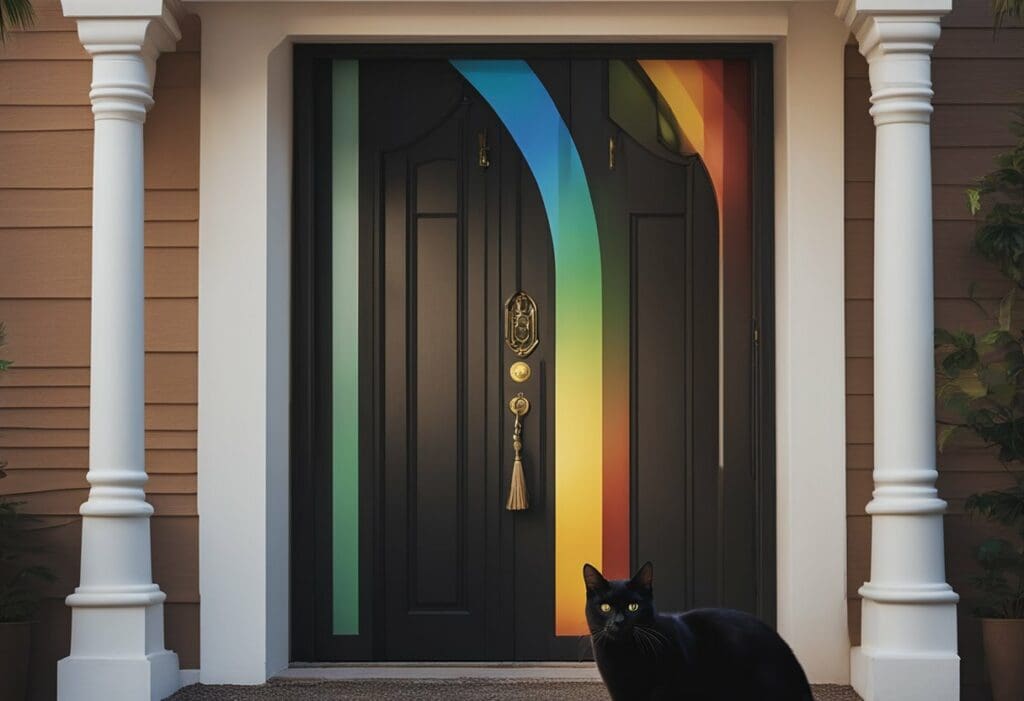
In Irish tradition, life’s milestones are steeped in myriad superstitions and beliefs involving supernatural elements. These practices have been deeply woven into the fabric of daily life as protective measures and acknowledgements of forces beyond the visible.
Folk Beliefs and Protective Measures
It’s widely acknowledged in Irish lore that birth and marriage are particularly susceptible to interference from the supernatural realm. To counter this, various protective measures are employed. In these rituals, salt is a common substance traditionally believed to ward off evil spirits. Newborns were often given a small sprinkle of salt, and it was not uncommon for brides to carry salt alongside their wedding bouquets.
Similarly, fire is another element often used in protective rituals. Flames, a source of light and warmth, were thought to repel evil forces. Therefore, Hearth fires were kept burning during significant life events to ensure the household’s safety. Bonfires during celebrations like weddings could also be seen as a communal effort to protect the joyous occasion from unwanted supernatural attention.
The Role of Supernatural Entities
Irish tradition acknowledges the presence of various supernatural entities that play roles throughout human life. Manannán, a sea deity from Irish mythology, is considered a guardian of the Otherworld and a figure who can bestow blessings or curses. It was believed that proper reverence for entities like Manannán could lead to a protective grace in one’s life.
Not all supernatural beings are as benevolent, and many beliefs are centred around protection from these capricious forces. For instance, the sidhe, or fairy folk, are often a focus in Irish traditions, where they might meddle in human affairs. As supernatural custodians of nature and its mysteries, their relationship with people is complex and invokes reverence and caution. Doing something as simple as pouring milk onto the earth could be seen as an act to appease these entities.
Irish customs encompass more than just rituals; they are a testament to a storied dialogue with the unseen, respecting the power of protective measures and the unpredictable nature of the supernatural.
Seasonal Festivals and Celebrations
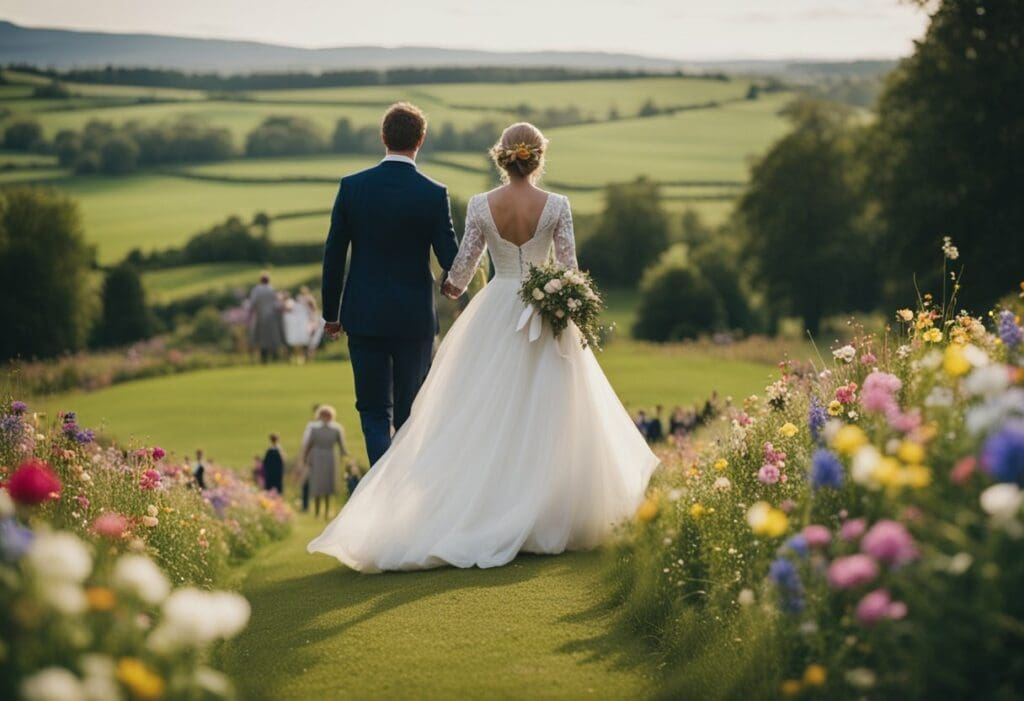
In Ireland, our calendar is punctuated with seasonal festivals deeply rooted in our agricultural heritage and communal spirit. These festivities showcase a cycle of life that is inextricably linked to nature’s rhythms.
Marking the Agricultural Calendar
Imbolc (1 February) is one of our cardinal celebrations marking the beginning of spring, symbolising purification and new life. It was traditionally a time when the ancient Irish celebrated the awakening of the land with fire rituals as the sun’s power grew stronger.
Meanwhile, Lughnasa (1 August) is our harvest festival, signifying the start of the harvest season. It’s a point of communal thanksgiving and celebration of our toil, accompanied by feasting, games, and matchmaking traditions.
Community Festivities and Gatherings
During the significant turning points of the agricultural year, our community-centric gatherings and festivals were times of vibrant celebration. Large bonfires are the heart of many festivities, epitomised by Samhain (31 October) — the precursor to modern Halloween — which marked the end of the harvest season and the onset of winter.
These ancient celebrations are dedicated to agricultural milestones and serve as cornerstones of Irish identity, fostering our sense of belonging and continuity with our ancestors. Through dancing, music, and storytelling, we uphold the traditions that weave the fabric of our communal heritage.
Poetry and Oral Traditions
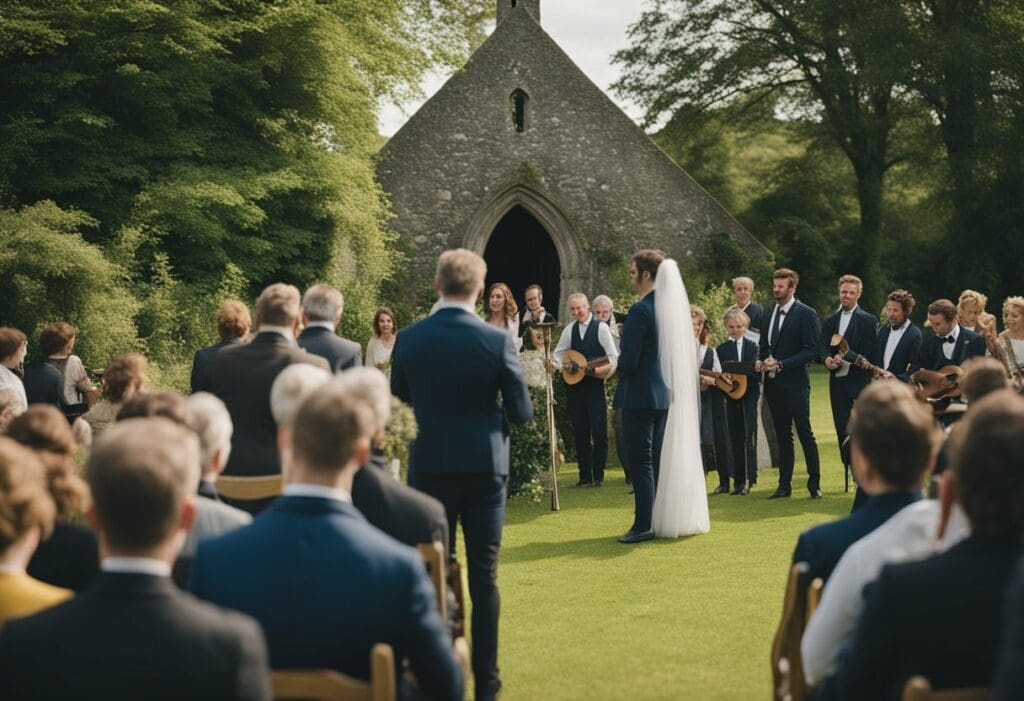
In the rich tapestry of Irish tradition, poetry and oral histories play pivotal roles in preserving our past and shaping our cultural identity. Through these narratives, we connect with the heart of Ireland—its myths, magic, and deeply rooted beliefs.
The Importance of Storytelling
Storytelling is entertainment and a powerful means of education and historical record. Oral history carries the weight of authenticity, a personal touch that cannot be replicated by written text alone. Within these spoken words, we encounter enchanting figures like Manannán, the Celtic god of the sea, whose stories colour our mythology and folklore, lingering in the depths of our collective consciousness.
Influence on Cultural Identity
The interweaving of oral traditions and poetic expressions profoundly influences our cultural identity. Whether it’s through acknowledging the feats of Lugh, the master of skills, or the more solemn recitations of religious verse, poetry solidifies our values and beliefs. Within this oral and poetic space, we express the island’s soul, celebrating and questioning what it means to be Irish.
From Individual to Society
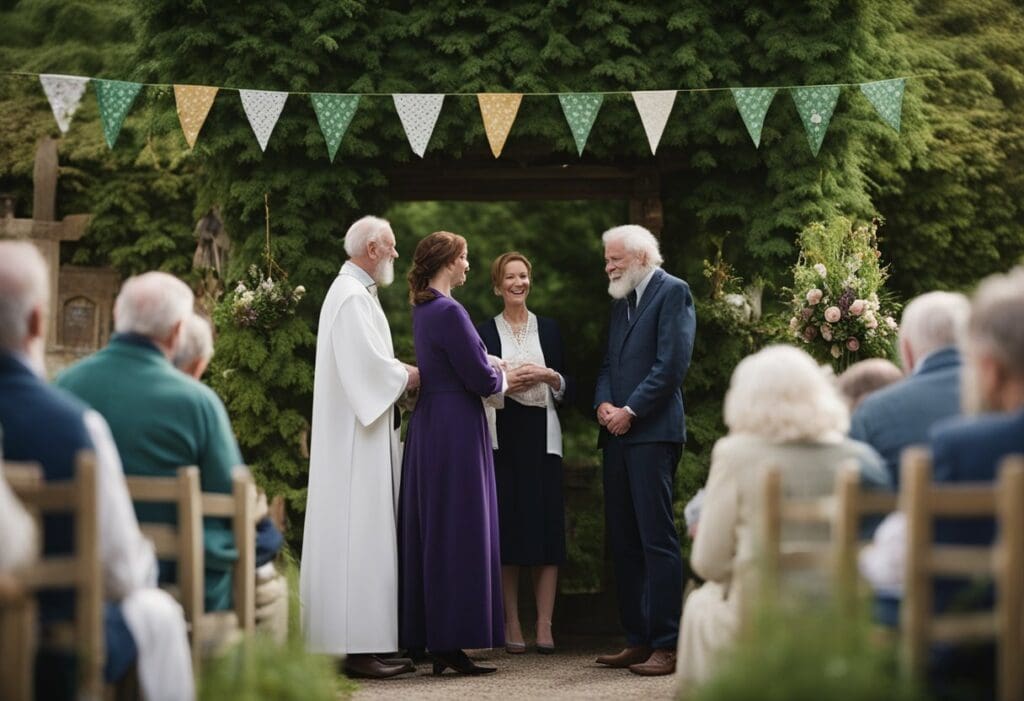
The cultural fabric of Ireland is woven with a series of significant events that mark the progression from individual existence into societal roles. We focus on illuminating these traditions and the transitions that bind individuals to the broader community.
Rites of Passage
The journey through life’s milestones begins with birth, an event steeped in customs that welcome a new member into society. Irish tradition previously incorporated numerous rituals to ensure the mother and child’s well-being. Marriage is another crucial passage, uniting two individuals and intertwining families and communities through ceremonies and celebrations.
Beyond marriage, rites of passage in Ireland also encompass the transition of young men and women into adulthood. These ceremonies, whether Christian confirmations or other cultural equivalents are often marked by gatherings that underscore their new status and roles.
Roles and Responsibilities
With each rite, there are associated roles and responsibilities that evolve. Men and women in Irish society traditionally had distinct and complementary roles. Our ancestors established gender-specific duties, with men often being the providers of the family and women the nurturers. However, this dynamic is ever-changing and adapting to contemporary values.
In their societal roles, men and women contribute to developing and maintaining Irish culture. Their involvement extends to celebrations that strengthen communal ties, and from generation to generation, each individual’s passage enriches our collective heritage.
Scholarly Perspectives and Research
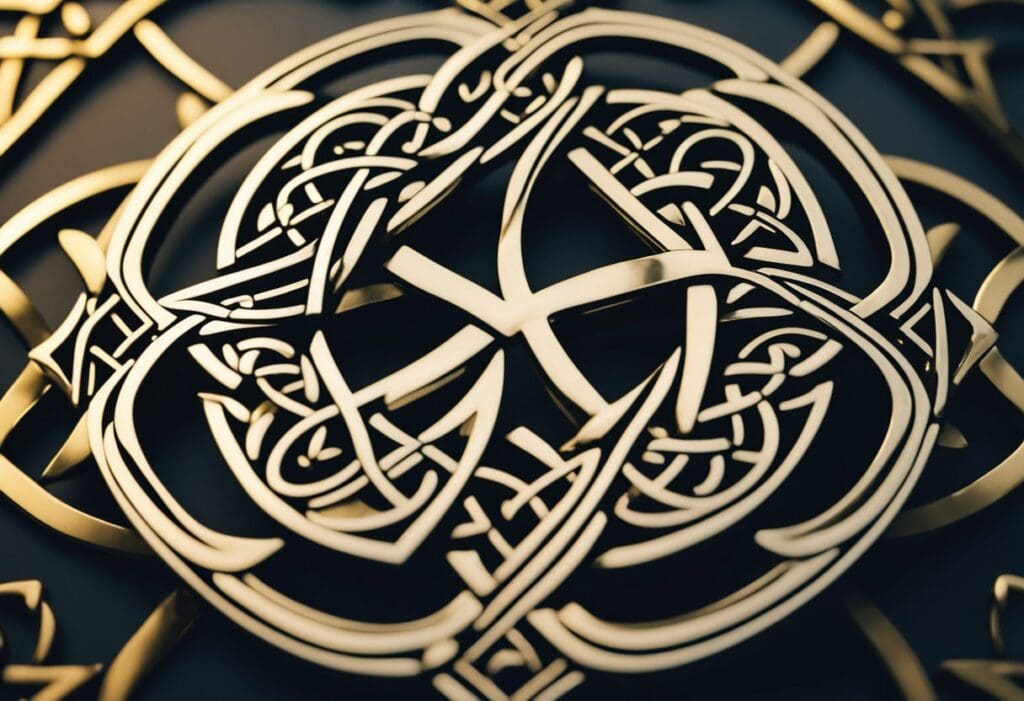
As we examine the life cycle in Irish tradition, we must consider the scholarly perspectives that have shaped our understanding of these cultural practices. Rigorous historical documentation and contemporary interpretations both play pivotal roles in this analysis.
Historical Documentation
Scholars have long been intrigued by the rites of passage that mark the journey from birth through marriage and beyond in Irish society. Historical records show that many such traditions have roots in broader European customs, yet they have been infused with a uniquely Irish character. For instance, handfasting, a traditional wedding ceremony, has been well-documented as far back as medieval times. The diligent work of historians has allowed us to trace these practices, providing a valuable window into the social fabric of the past.
Modern Interpretations
In moving to contemporary times, the interpretations of these rich traditions have evolved. Modern scholars actively dissect how these age-old practices have been retained, adapted, or sometimes abandoned in the face of a rapidly changing society. They draw comparisons between traditional Irish ceremonies and other cultures while examining the influence of modern European norms. This ongoing scholarly discourse ensures that the significance and evolution of Ireland’s cultural rites are continually re-evaluated in today’s context.
Access and Preservation of Traditions
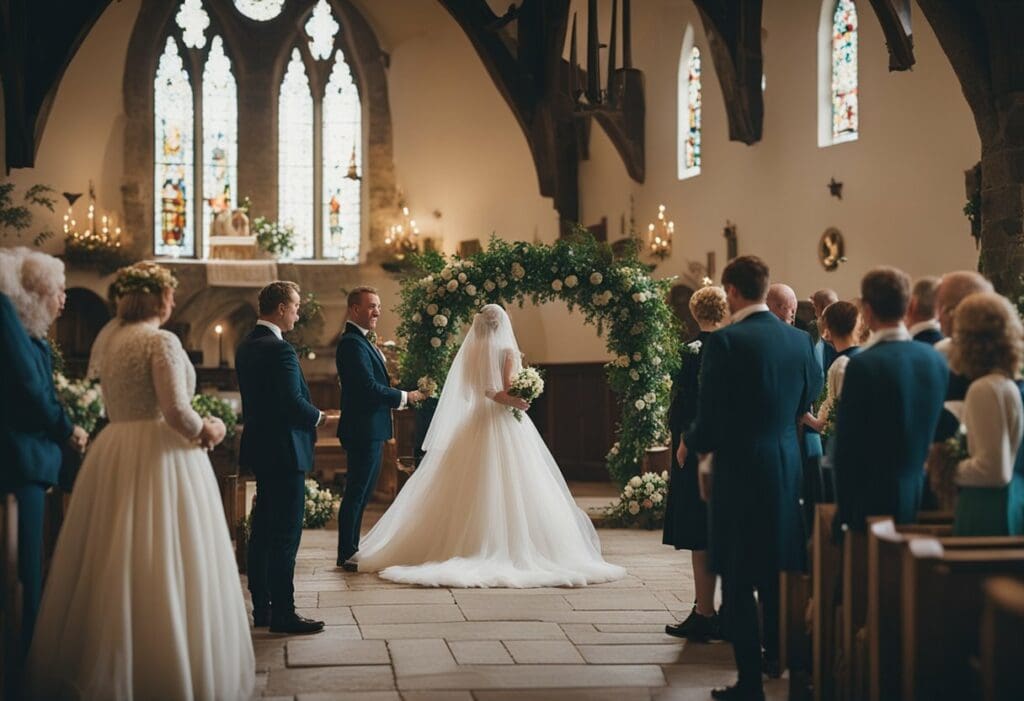
In Irish tradition, the continued access to and preservation of cultural practices are crucial. We ensure this through various means, including leveraging digital technology and maintaining comprehensive accounts of personal and institutional practices.
Digital Archives and Resources
In the digital age, an array of online platforms and digital archives has enabled a wider audience to engage with Irish traditions. We utilise these resources to preserve rites such as birth, marriage, and death ceremonies. Digital repositories provide IP-based access and institutional subscriptions, allowing for a broad and authenticated reach. Leveraging technologies such as Shibboleth/OpenAthens facilitates secure login and account management, ensuring that traditions are stored and accessible to society members and interested individuals globally.
Institutional and Personal Accounts
Personal narratives and institutional records play a significant role in capturing the nuances of our customs. We gather these accounts through interviews and collaborations, turning them into rich, descriptive records that offer a more intimate view of our culture. These are then integrated into usage statistics to track engagement and tailor future content, ensuring relevance and a respectful representation of our traditions. This careful management of accounts ensures that how we access and preserve our cultural practices remains effective and true to heritage.
Frequently Asked Questions
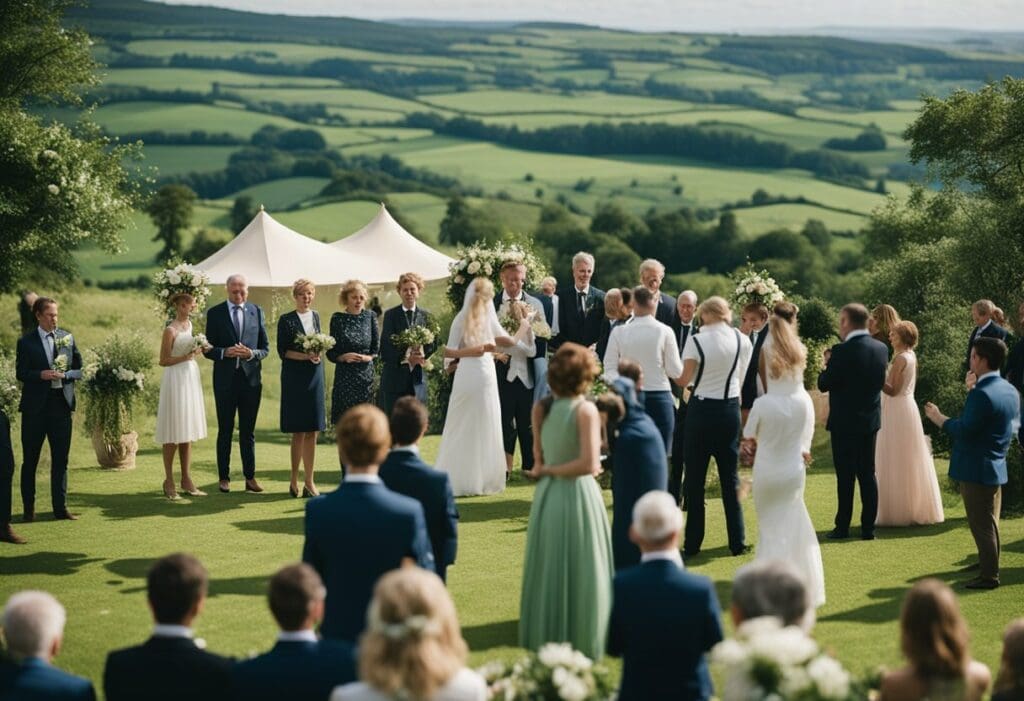
This section addresses some of the most commonly asked questions about Irish traditions surrounding the life cycle, from birth to marriage.
What are the common traditions associated with pregnancy in Ireland?
In Ireland, a pregnant woman might be gifted with a ‘claddagh’ ring symbolising love, loyalty, and friendship. Additionally, it’s traditional for Irish families to host a ‘baby shower’ to gather supplies for the expected child.
How were births traditionally celebrated in Celtic culture?
During Celtic times, births were significant community events. Rituals such as ‘imbas forosnai’, where seers would bless the newborn, were common, and birth itself was celebrated as a transition for the child and the family and community.
Can you describe traditional ceremonies for Irish Catholic weddings?
Irish Catholic weddings typically involve a Nuptial Mass where the couple receives a blessing. The ceremony often includes the ‘handfasting’ ritual, an ancient Celtic tradition symbolising the binding together of the couple.
What peculiar customs are often seen at Irish weddings?
One peculiar custom at Irish weddings is the ‘magic hanky’ a bride carries as a symbol of fertility and good luck. This hanky is later fashioned into a bonnet for the couple’s firstborn child.
What are a groom’s conventional roles and traditions in an Irish wedding?
The groom traditionally plans a ‘feast day’ outing after the wedding to express gratitude to those involved. It’s a day filled with cultural gestures of appreciation, including music, dance, and storytelling.
What gifts are traditionally given to newborns in Irish families?
Gifts for newborns in Irish families often include silver items, like a spoon or a cup, which are thought to bring good luck and health to the child. A blanket or a piece of clothing knitted by a family member is also a conventional gift, symbolising warmth and continuity of family tradition.


